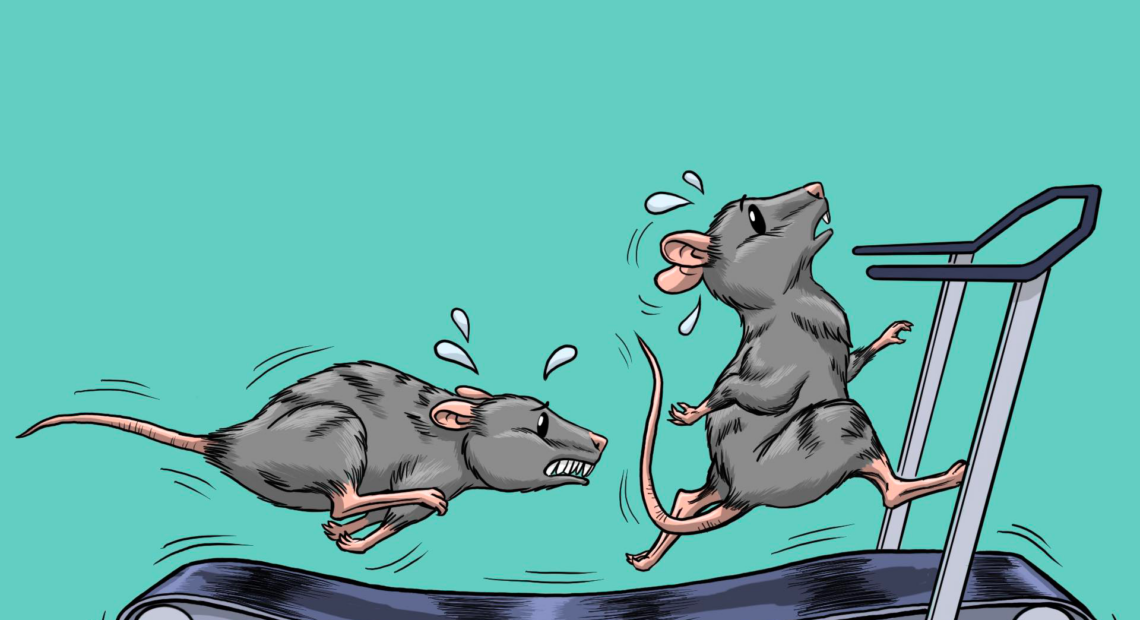
Rats on treadmills study shows males burn fat, females gain it back
Listen
(Runtime 1:03)
Read
If you’ve ever tried to lose any body fat, you may have spent some time on the dreaded treadmill. Now, imagine tiny treadmills that are built for rats. A bunch of fit rodents have been running exercise regimens of their own — for science.
“There really was a tiny treadmill,” said Joshua Adkins, a scientist at the Department of Energy’s Pacific Northwest National Laboratory.
Scientists across the country recently wrapped up a comprehensive study focusing on how exercise affects the body. They studied rats that have run their tails off at the University of Iowa (not literally). The rats ran five days a week, for up to eight weeks. It’s pretty similar to workouts recommended for people.
With rats, scientists found males lost more fat than female rats after endurance exercise training.
Scientists compared what is happening at a molecular level in these rat runners to their couch potato counterparts. At Pacific Northwest National Laboratory, researchers discovered the male rats burned fat and kept it off. Female rats burned fat at the beginning, but it was back by the end of the study. Fat in females is critical to reproductive health, said Gina Many, a first author on the study and biomedical scientist at Pacific Northwest National Laboratory.
“In females, estrogen is (likely) driving a lot of these responses that causes them to maintain and recycle fat,” Many said.
The study also identified potential ways female rats maintain healthy fat, likely to help with reproduction.
Scientists have long known exercise reduces the risk of 35 different diseases, she said.
“We don’t know the exact mechanisms by how it does that,” Many said. “(Exercise) also extends the lifespan and reduces the risk of death. So by taking all of these different tissues and doing this deep analysis, we can identify novel molecular regulators of the health benefits of exercise.”
Rats share a basic physiology with people. The rats in these studies were relatively the age of a 20- or 30-year-old human, in rat years. The rats also allowed scientists to collect massive amounts of molecular data, Adkins said.
“With rats, we’re able to do some studies that we can’t do with human beings,” Adkins said.
The scientists studied 18 different types of tissue from rats that ran on treadmills and others that sat around. Everything was impacted from exercise, including molecules in the rats’ liver, intestines, lung, heart and immune systems.
Several studies came out of the research. The main study was published May 1 in the journal Nature and funded by the National Institutes of Health Common Fund with an initial $170 million in funding.
“The project itself is about exercise and health, which is really the exciting piece here. Almost all research that’s funded by the NIH is for disease. However, exercise has magical abilities in helping keep us young and smart and keep all of our healthy, healthy bits going forward,” Adkins said.
Much less exercise research focuses on females, the scientists said.
“It’s almost always been men, and so much information has been lost,” Adkins said.
Next, they plan to study these exercise benefits in people. Researchers also plan to look more deeply at questions that arose with the rats, like how age impacts the fat burning process.
















